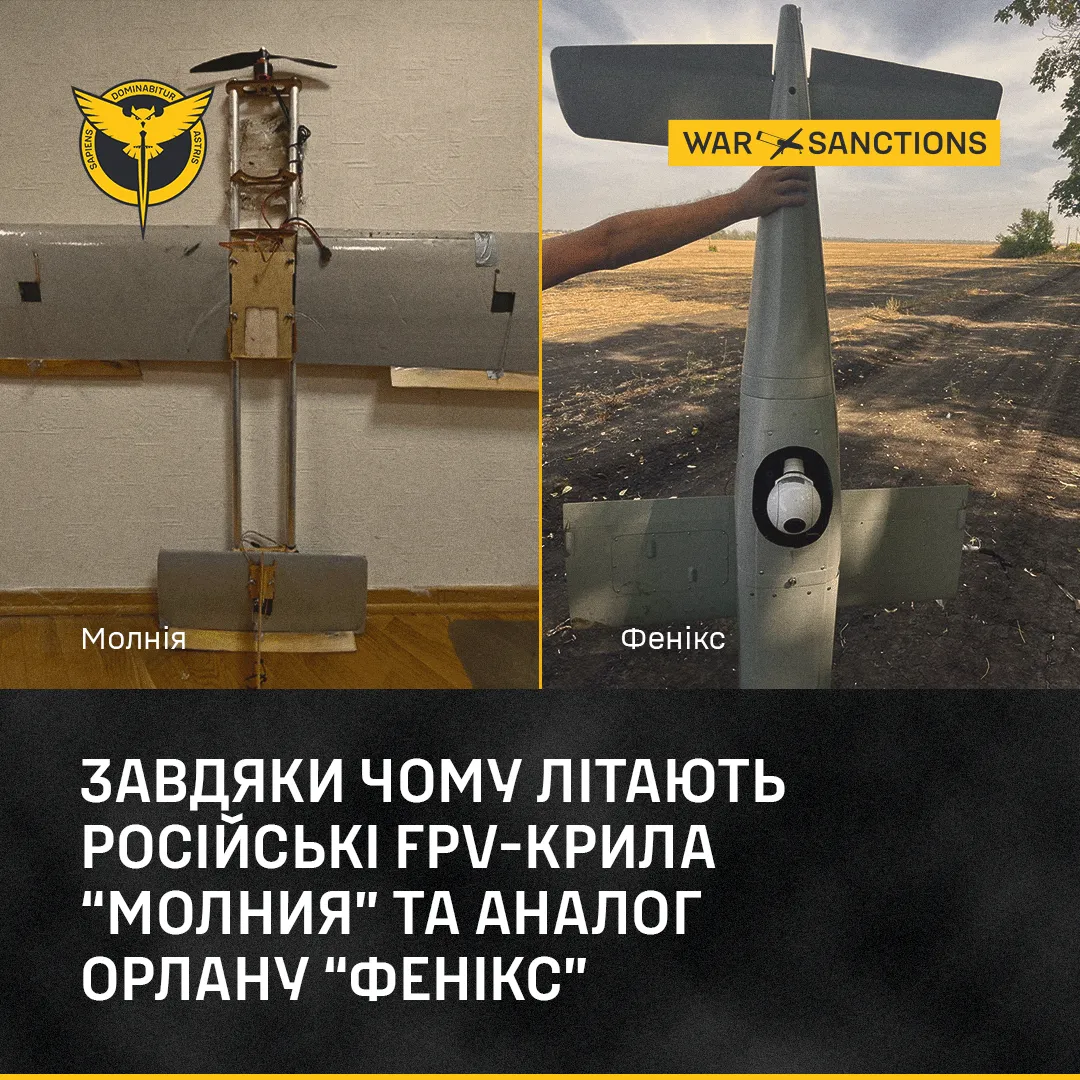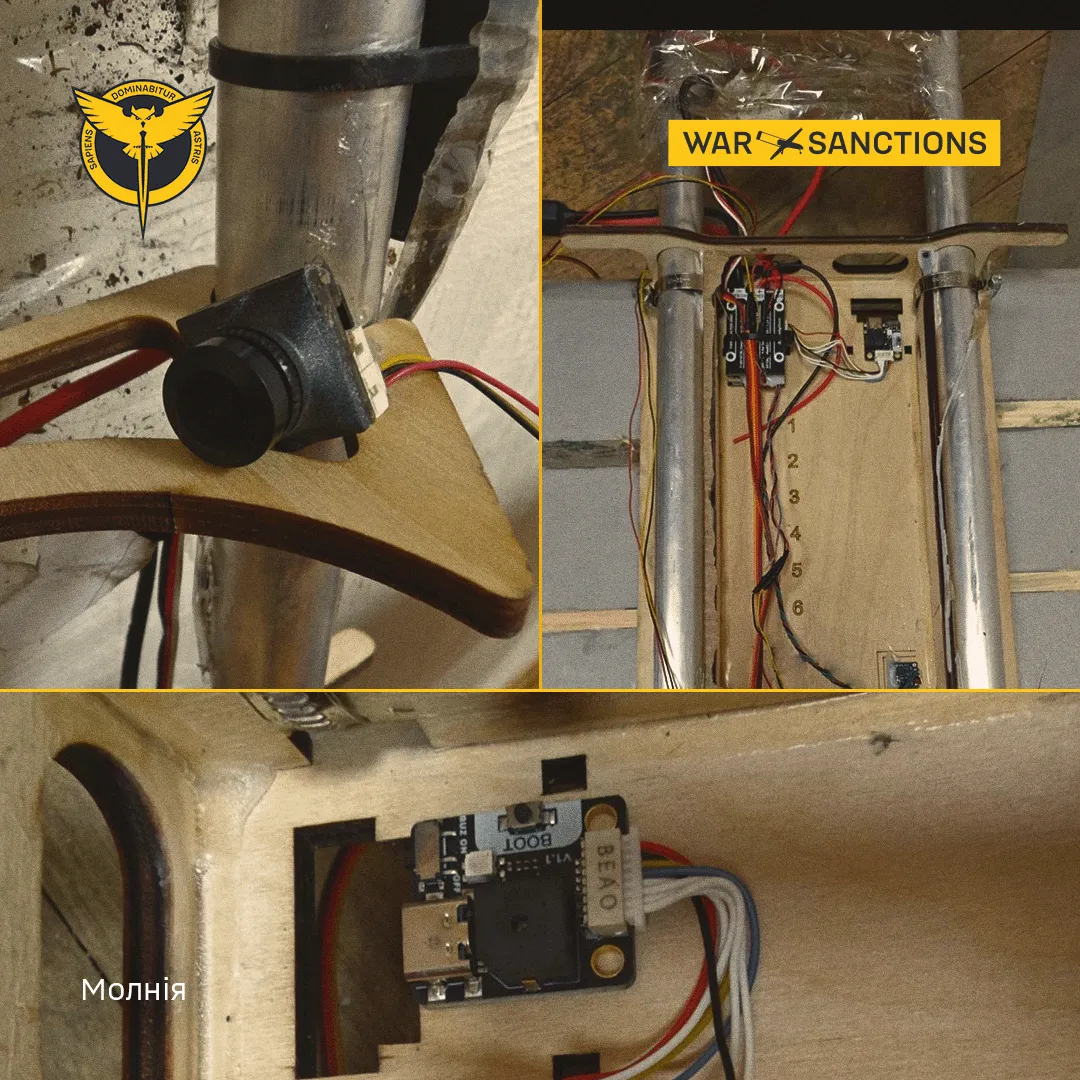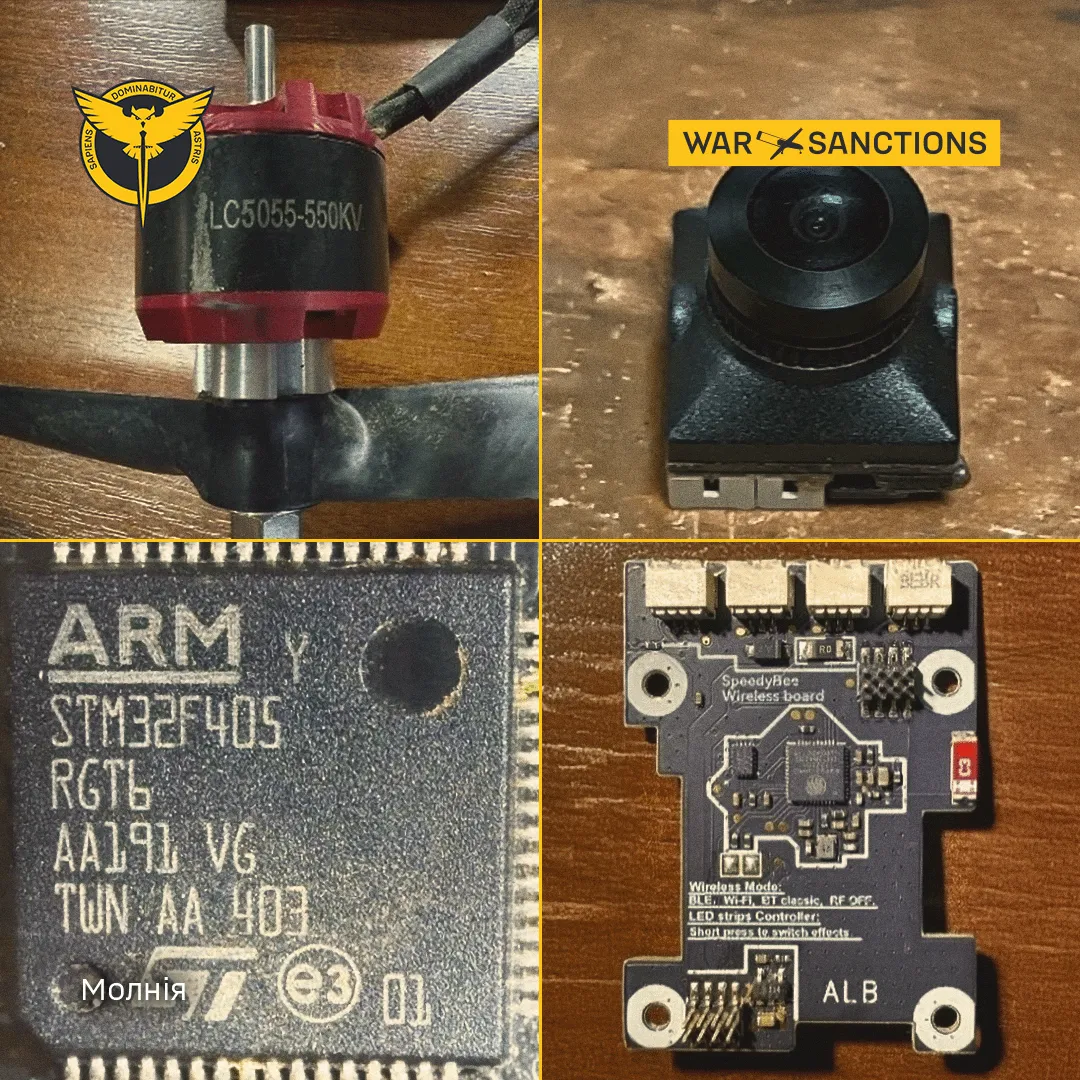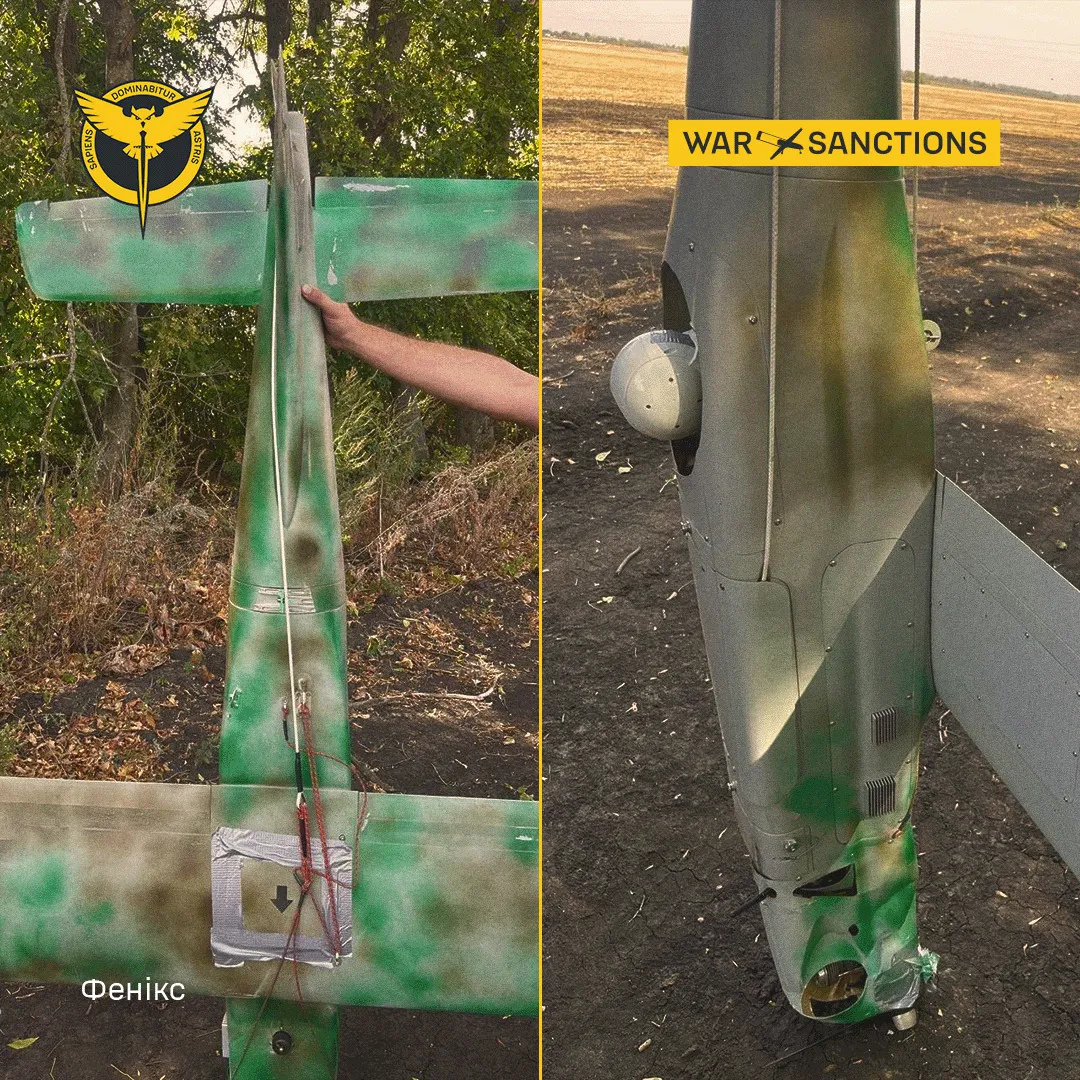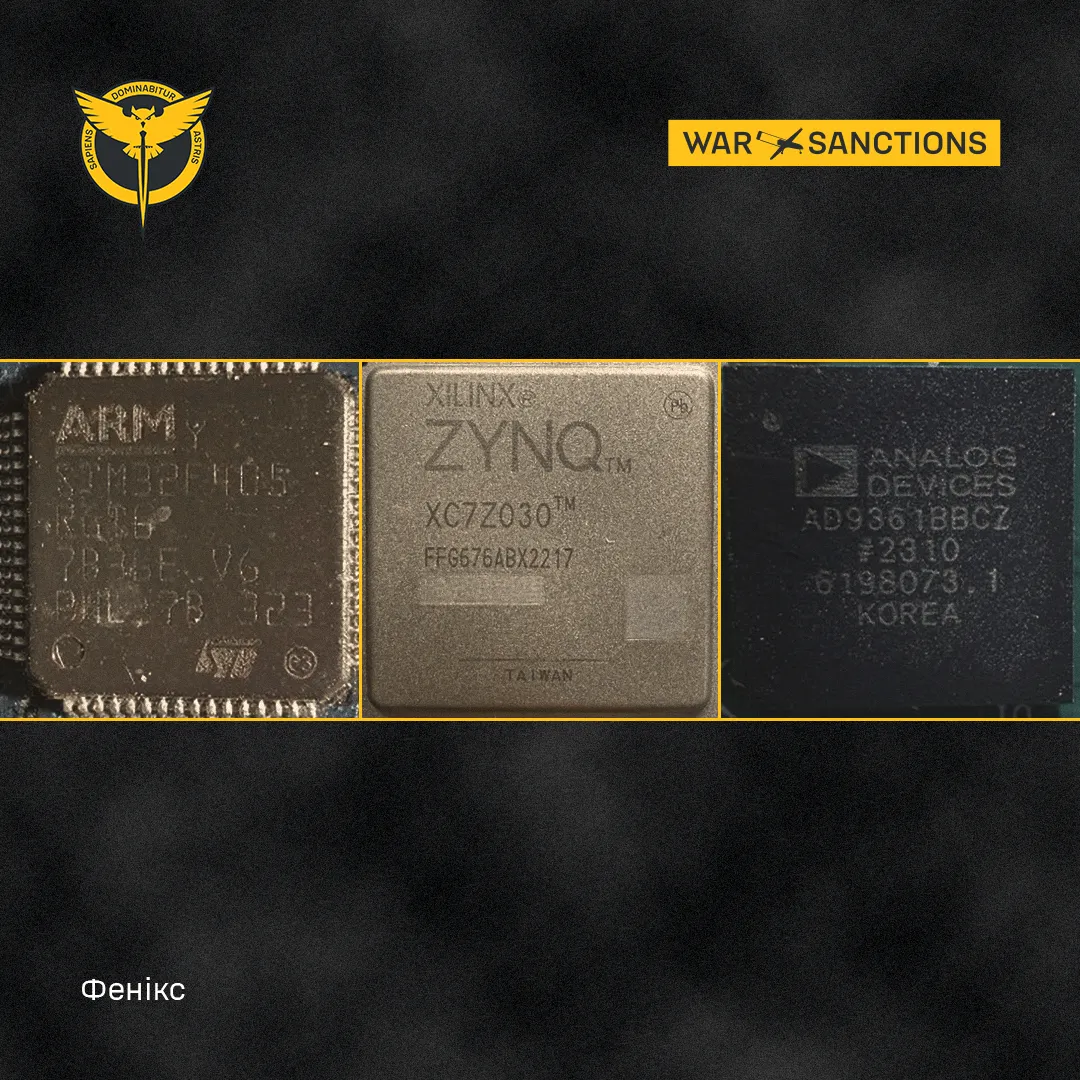The russian Molniya and Phoenix UAVs use components made in China and some Western countries, including Switzerland, the United States, and the Netherlands.
The Molniya is an airplane-type strike UAV launched from a special catapult and guided by an operator like an FPV drone. The UAV has a flight range of up to 40 km and a warhead of up to 5 kg, which is ten times less than the Shahed's.
In addition to military targets, russia uses Molniyas to terrorize civilians in cities and districts close to the front line. In November of this year, the russian army targeted a high-rise building and a shopping center in the Saltiv district of Kharkiv, and several people were injured. Given that the UAV is controlled and guided directly by the operator, civilian objects were targeted deliberately.
Previously, russia has also used similar UAVs without warheads to overload Ukrainian air defense systems.
The Molniya has a relatively simple design and cheap components, primarily Chinese.
The markings on the electric motor, flight controller, camera, and most electronic components correspond to Chinese manufacturers, such as FATJAY, SpeedyBee, Caddx, Huayi Microelectronics, and Trex Technologies.
However, like many other boards of various russian weapons, the Chinese flight controllers are powered by microcontrollers labeled by the Swiss manufacturer STMicroelectronics.
In addition, the engine control board uses converters labeled by the American manufacturer Vishay and capacitors by the Japanese manufacturer Rubycon.
The Phoenix is a reconnaissance UAV that its developer, the russian TAIP LLC, calls a "development of the Orlan-10." The "stuffing" contains components labeled by manufacturers from five countries: the United States, Switzerland, China, the Netherlands, and Taiwan. Seven components are labeled by STMicroelectronics, headquartered in Switzerland, and manufactured in nine countries on three continents.
Earlier, the War & Sanctions portal published the component base of other "newest" russian UAVs - S-70 "Hunter", "Parodya", and "Gerbera".
To be continued!
